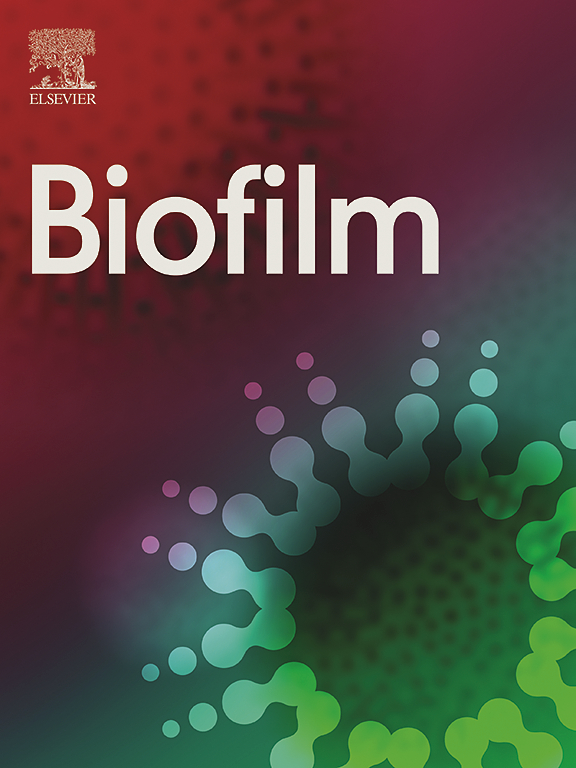Transcatheter aortic valve implantation (TAVI) prostheses in vitro - biofilm formation and antibiotic effects
IF 4.9
Q1 MICROBIOLOGY
引用次数: 0
Abstract
Background
Transcatheter aortic valve implantation (TAVI) is a percutaneous catheter-based treatment of aortic stenosis as an alternative to open heart valve surgery. In cases of TAVI endocarditis, the treatment possibilities may be limited as surgical removal of the infected valve may be associated with a high risk in elderly, comorbid or frail patients. The propensity of bacteria to form a biofilm on foreign material is assumed to be of importance part of the disease process in TAVI endocarditis, but no studies on biofilm formation on TAVI valves have been conducted. We hypothesize that Staphylococcus aureus and Enterococcus faecalis biofilm formation on TAVI valves may have an impact on antibiotic tolerance and non-surgical cure rates.
Methods
TAVI valves (pieces including part of the metal frame, approximately 1 cm wide) were exposed to either species in vitro in LB-Krebs Ringer medium at 37 °C, with the bacterial count being assessed by culturing of sonicated TAVI pieces and broth at 0, 4, 18 and 24 h after bacterial exposure. Scanning electron microscopy (SEM) was performed. Effects of ampicillin, gentamicin, moxifloxacin, rifampicin (for S. aureus), and ceftriaxone (for E. faecalis) at 5 times minimal inhibitory concentration were tested alone and in combination with ampicillin. Antibiotics were added to biofilm aged 0 or 24 h and the effects assessed.
Results
Exposure for 15 min established attachment to all of valve pieces. SEM findings were consistent with biofilm formation and suggested lower amounts of bacteria on the metal compared to the tissue part of the TAVI valves. The number of bacteria attached to the TAVI valves increased until 24 h of incubation from less than 10^1 to a level of approximately 10^9 CFU/g. The bacteria became more tolerant to antibiotics on the TAVI valves over time, with the bactericidal effect against 24-h old biofilm being significantly less effective than against 0-h old biofilm depending on antibiotic.
Conclusions
The results indicate that bacteria can adhere to metal and tissue parts of the TAVI valves within minutes after an exposure which is comparable to transient bacteremia in vivo, and that the bacteria rapidly gain biofilm properties, associated with significantly reduced antibiotic effect.
体外经导管主动脉瓣植入(TAVI)假体--生物膜的形成和抗生素的作用
背景导管主动脉瓣植入术(TAVI)是一种经皮导管治疗主动脉瓣狭窄的方法,可替代开胸心脏瓣膜手术。在 TAVI 发生心内膜炎的情况下,由于手术切除受感染的瓣膜对高龄、合并症或体弱的患者来说风险较高,因此治疗的可能性有限。细菌在异物上形成生物膜的倾向被认为是 TAVI 心内膜炎疾病过程的重要组成部分,但目前还没有关于 TAVI 瓣膜上生物膜形成的研究。我们假设金黄色葡萄球菌和粪肠球菌在 TAVI 瓣膜上形成的生物膜可能会对抗生素耐受性和非手术治愈率产生影响。方法将 TAVI 瓣膜(包括部分金属框架,宽约 1 厘米)置于 37 °C 的 LB-Krebs Ringer 培养基中,在体外暴露于其中任一菌种,细菌暴露后 0、4、18 和 24 小时通过超声 TAVI 瓣膜和肉汤培养评估细菌计数。进行了扫描电子显微镜(SEM)检查。测试了最小抑菌浓度为 5 倍的氨苄西林、庆大霉素、莫西沙星、利福平(针对金黄色葡萄球菌)和头孢曲松(针对粪肠球菌)单独或与氨苄西林联合使用的效果。将抗生素添加到生物膜中 0 或 24 小时,并评估其效果。扫描电子显微镜的结果与生物膜的形成一致,表明与 TAVI 瓣膜的组织部分相比,金属上的细菌数量较少。培养 24 小时后,附着在 TAVI 瓣膜上的细菌数量从不到 10^1 增至约 10^9 CFU/g。随着时间的推移,细菌对 TAVI 瓣膜上抗生素的耐受性越来越强,根据抗生素的不同,对 24 小时生物膜的杀菌效果明显低于对 0 小时生物膜的杀菌效果。
本文章由计算机程序翻译,如有差异,请以英文原文为准。
求助全文
约1分钟内获得全文
求助全文

 求助内容:
求助内容: 应助结果提醒方式:
应助结果提醒方式:


